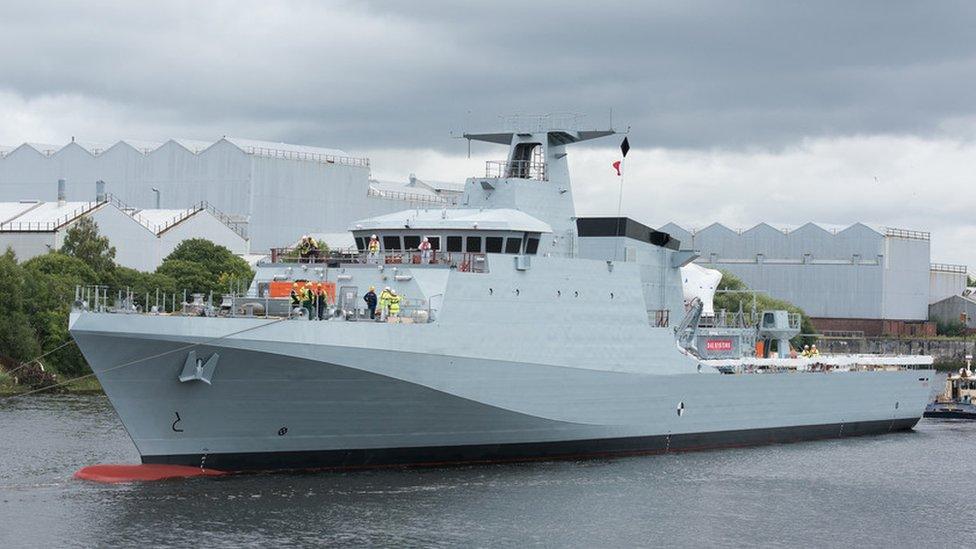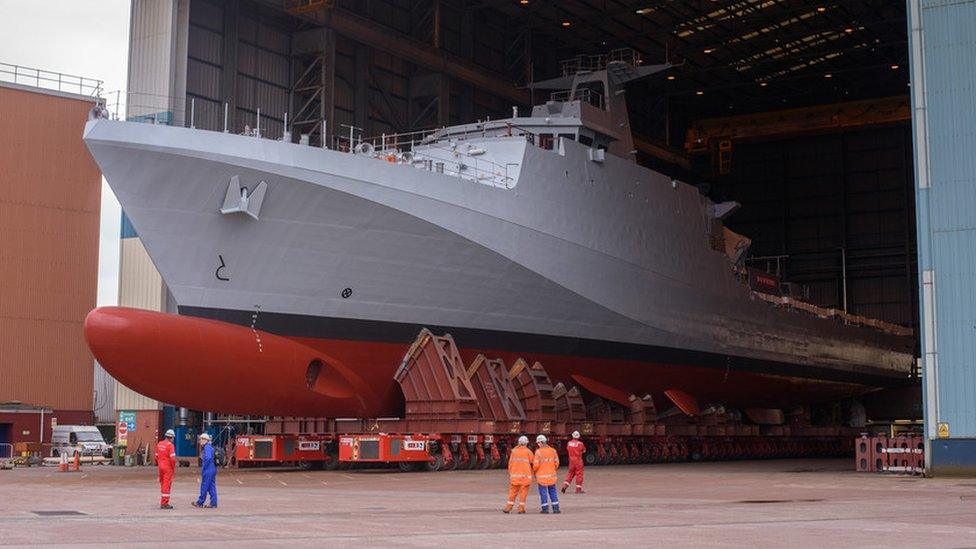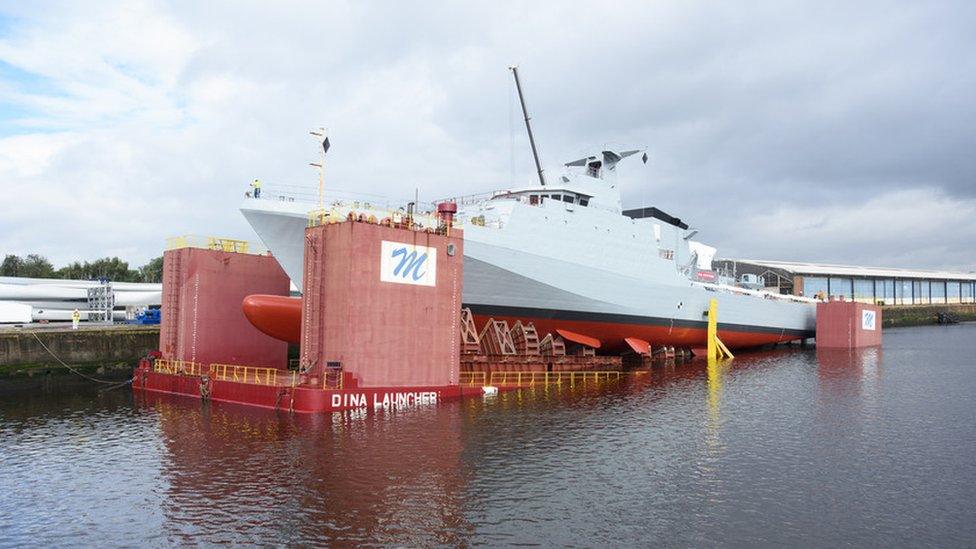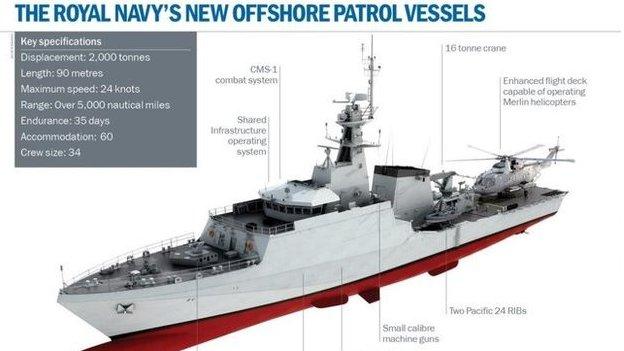Navy warship built on River Clyde unveiled
- Published
Timelapse of Navy warship built on River Clyde
The first of three Royal Navy warships being built on the River Clyde has been unveiled at BAE's Scotstoun yard, where it will be finished and tested.
HMS Forth is part of a £348m contract to build vessels to support counter-terrorism, counter-piracy and anti-smuggling operations.
It is the first complex warship to be fully assembled at Glasgow since Type 45 destroyer HMS Duncan in 2010.
The ships are being built at the company's yards at Scotstoun and Govan.
HMS Forth will be ready in 2017, with the other ships to be named HMS Medway and HMS Trent.

The offshore patrol vehicles are capable of being deployed around the world with a range exceeding 5,000 nautical miles - the equivalent to a journey from Portsmouth to Rio de Janeiro - and a maximum speed of 24 knots. Variants of this design are already in service in Brazil and Thailand.
They will be able to carry the latest Merlin helicopters and special forces personnel.

Union leaders representing workers at the Govan and Scotstoun shipyards have expressed concern that ongoing delays to a UK government program to build eight Royal Navy Type 26 frigates on the Clyde could put jobs at risk.
Vice Admiral Simon Lister, chief of materiel (fleet) for the MOD's Defence Equipment and Support organisation, said the rollout of HMS Forth would safeguard the "vital capability and skills" that will be used in the delivery of the Type 26 frigates.
Iain Stevenson, managing director at BAE Systems Naval Ships, said: "For HMS Forth to enter the water less than two years after construction started is hugely significant and sets the tone for the future of modern warship building.
"We're building on the proud heritage of British shipbuilding here in Glasgow and looking to the future. Not only does this mean we are creating valuable additions to the Royal Navy's fleet but we are ensuring that shipbuilding skills and expertise are maintained and developed in the UK."

HMS Forth leaves the ship build hall at Govan

HMS Forth being lowered into the water
The ship was structurally completed 18 months after the first plate of steel for the vessel was delivered to Glasgow.
It was moved from the Govan yard to the Scotstoun yard on 13 August this year.
A remotely controlled unit with 160 wheels moved the 1,600 tonne vessel - a weight comparable with 120 London buses - from inside the ship build hall at Govan to the dock side, before it journeyed towards a waiting barge.
It is now at Scotstoun where the installation of combat systems is underway.
- Published10 October 2014

- Published10 October 2010